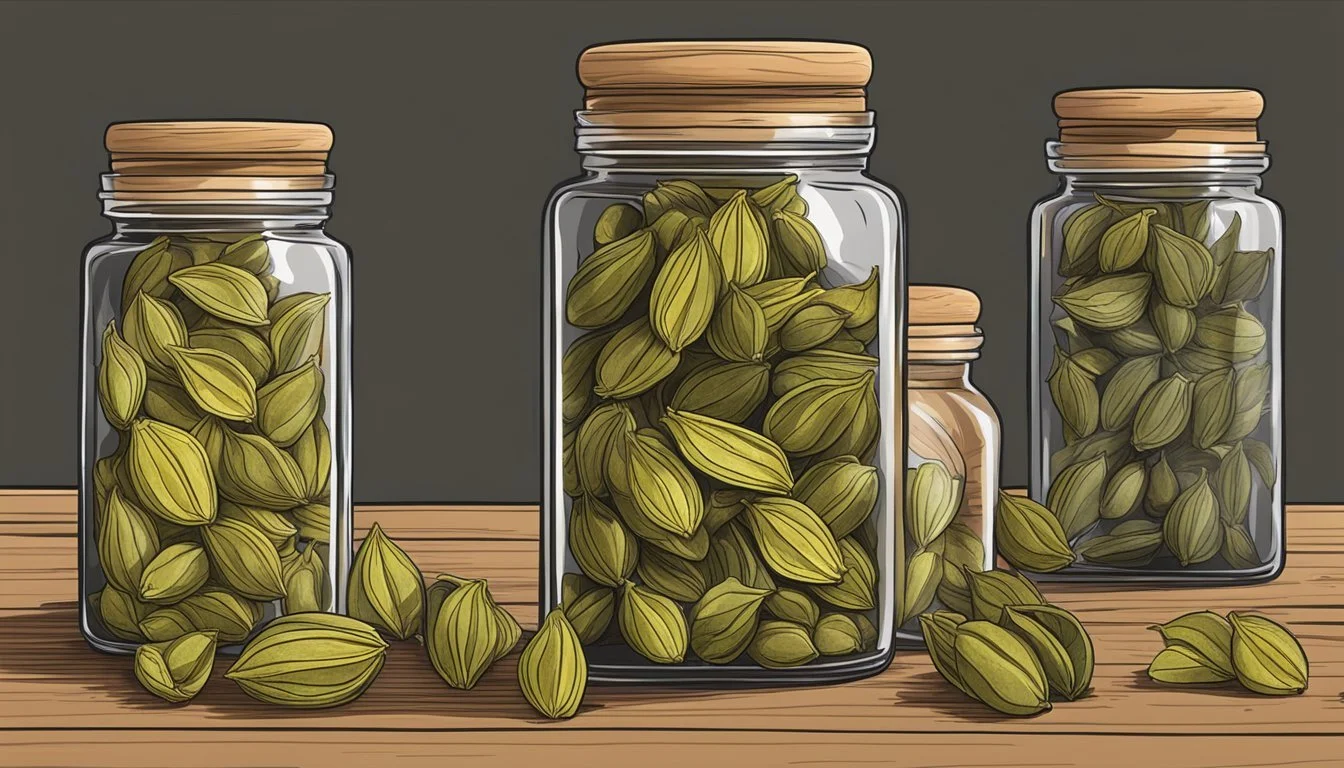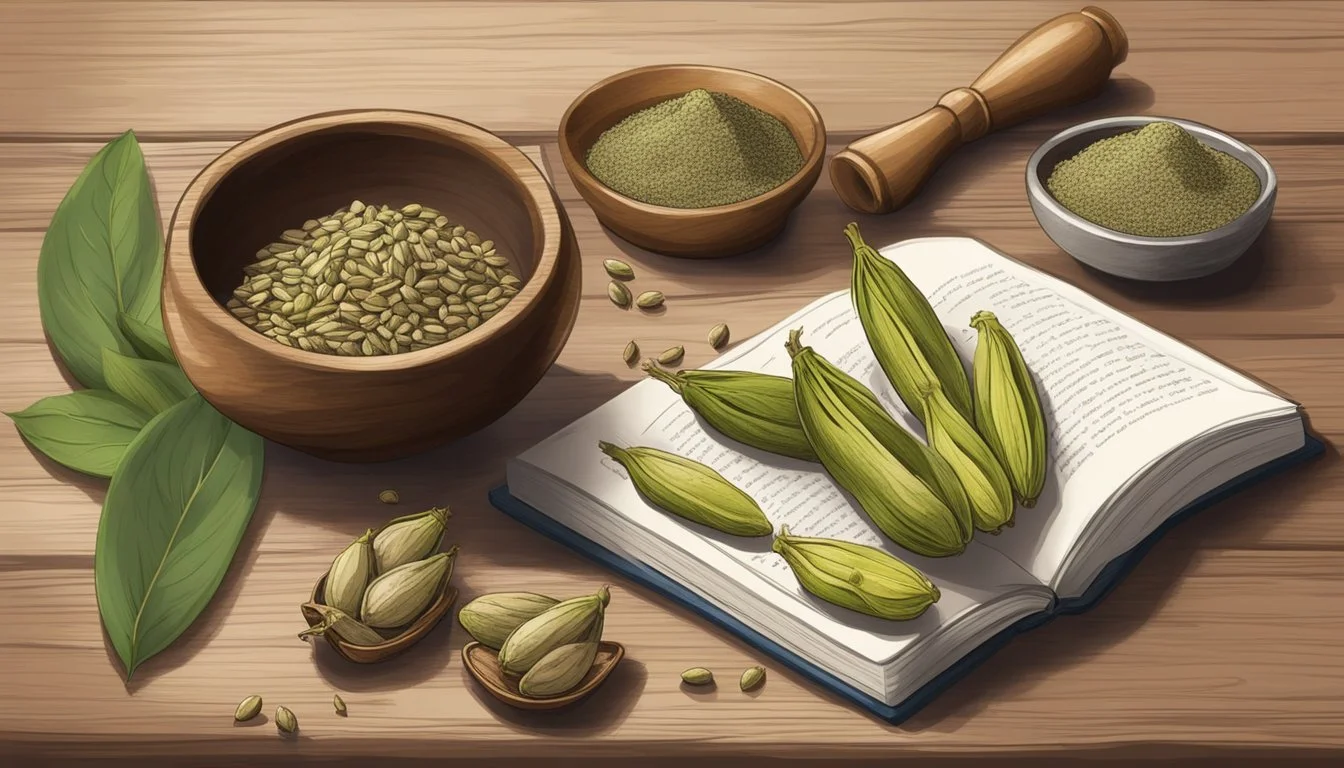Do Cardamom Pods Go Bad?
Shelf Life and Storage Tips
Cardamom pods, a staple in Indian and Middle Eastern cuisine, are prized for their warm, slightly sweet flavor with floral notes. Like all spices, cardamom pods have a shelf life and can go bad over time. The most common indicators that cardamom pods have gone bad are a loss of flavor, muted aroma, and the pods becoming dry and brittle.
Fresh cardamom pods should feel plump and slightly moist, adding vibrancy to your dishes and drinks. Stale or old cardamom pods tend to become bland and musty, signaling a significant reduction in their culinary and health benefits. Proper storage in a cool, dry place can help extend their shelf life.
Beyond their flavorful contributions to cooking, using fresh cardamom pods is crucial for maximizing the health benefits they offer. Whether enhancing the aroma of coffee or enriching an herbal tea, ensuring your cardamom is fresh will significantly elevate your culinary experiences.
Understanding Cardamom Pods
Cardamom is a spice known for its complex flavor and aroma, widely used in various cuisines. This section explores its varieties, characteristics, and culinary benefits.
Varieties and Characteristics
Cardamom comes in different varieties, primarily green cardamom, black cardamom, and white cardamom.
Green cardamom, or true cardamom, has a vibrant green color and is highly prized for its sweet, floral notes and intense flavor. It's often used in both sweet and savory dishes.
Black cardamom has larger, darker pods and a smoky, earthy flavor. It's commonly used in hearty, robust dishes like stews and braises.
White cardamom is essentially bleached green cardamom, with a milder flavor and less aromatic profile.
The essential oils within the seeds are responsible for cardamom's distinct aroma and taste. Fresh cardamom pods should be plump and slightly moist, with a potent fragrance.
Culinary Uses and Benefits
Cardamom pods are versatile and used in a variety of culinary applications.
In beverages, cardamom enhances coffees, teas, and even cocktails with its aromatic and floral notes.
In baking, it's a key ingredient in traditional recipes like chai-spiced cookies and Scandinavian pastries.
Savory dishes also benefit from the spice's complex flavor. Indian and Middle Eastern cuisines frequently incorporate both ground and whole pods in curries and pilafs.
The health benefits of cardamom include aiding digestion, possessing anti-inflammatory properties, and potentially improving oral health. The essential oils in cardamom seeds are believed to have therapeutic properties, adding to its culinary appeal.
By toasting whole pods briefly in a skillet before use, one can release these oils, enhancing the flavor of the dishes.
Signs of Deterioration
When cardamom pods start to go bad, noticeable changes in their appearance and smell occur, signaling a decline in their quality and flavor.
Visual Indicators
Color: Fresh cardamom pods typically exhibit a vibrant green hue. If the pods have turned dull or faded, this is an initial indication that they may be losing their potency.
Texture: The pods should feel plump and slightly moist. When they become dry and brittle, it means they are likely past their prime.
Appearance: Watch for any signs of mold or discoloration on the pods. Mold will often appear as dark spots or a fuzzy layer on the surface.
Olfactory Indicators
Smell: Fresh cardamom pods give off a strong, aromatic scent with warm, sweet, and floral notes. If the pods have a musty or faint smell, this suggests a significant loss of essential oils and flavor.
Aroma Strength: The intensity of the aroma also matters. A strong fragrance indicates freshness, while a weak or nonexistent scent indicates the pods have aged and lost their desirable qualities.
Factors Affecting Freshness
Cardamom pods' freshness is influenced by multiple factors, primarily related to storage conditions and the physical state of the pods.
Storage Environment
The storage environment plays a crucial role in maintaining the flavor and aroma of cardamom pods. Moisture, light, and heat are the main elements that can degrade the quality of these spice pods.
Storing cardamom in an airtight container is essential to protect them from humidity and moisture, which can cause mold growth and spoilage.
Light and heat can strip away the essential oils, diminishing the pods' aromatic qualities. Therefore, keeping cardamom in a cool, dark place is ideal to preserve its freshness.
Physical State Impact
The physical state of cardamom pods also significantly impacts their longevity. Whole cardamom pods retain their flavor longer compared to ground seeds.
When the seeds remain inside the pods, they are better shielded from air and moisture, which helps maintain their aromatic oils. Fresh cardamom pods should be plump and slightly moist.
Dry and brittle pods are a clear sign of age and reduced flavor quality. Upon grinding, cardamom seeds quickly lose their essential oils, making storage of whole pods preferable for extending freshness.
Proper Storage Techniques
Proper storage of cardamom pods ensures they remain fresh and retain their flavors for as long as possible. Follow specific guidelines for both short-term and long-term storage to maximize their shelf life.
Short-Term Storage
For short-term storage, keeping cardamom pods in an airtight container is essential. This prevents exposure to air, which can degrade the essential oils responsible for their aroma and flavor. Glass jars with tight-fitting lids or plastic containers that seal well are effective choices.
Place the airtight container in a cool, dry, and dark place, such as a pantry. Avoid locations exposed to direct sunlight, which can cause the pods to lose their vibrant green color and potency. Control the surrounding temperature to prevent the pods from becoming dry or brittle.
Longevity Tips for Long-Term Storage
For longer-term storage, consider additional steps to ensure preservation. Storing cardamom pods in the freezer can significantly extend their shelf life. Place the pods in a freezer-safe, airtight container to protect them from moisture and freezer burn.
When freezing, it's crucial to keep the pods tightly sealed and avoid frequent temperature changes to maintain their integrity. Upon removal, allow them to reach room temperature gradually before use to prevent condensation inside the container.
Employing these techniques ensures that whether storing cardamom short-term or long-term, the pods maintain their flavor and aromatic properties efficiently.
Maximizing Cardamom Usage
Properly using cardamom pods ensures dishes retain their distinct flavor and aroma. The key aspects to focus on are optimizing flavor in various dishes and choosing between whole pods and ground cardamom for different recipes.
Optimizing Flavor in Dishes
To enhance flavor, whole cardamom pods can be lightly crushed before use. This releases essential oils, adding depth to both savory and sweet dishes. For stews and meat dishes, add crushed pods early in the cooking process to allow the flavors to meld.
In baking and desserts, incorporate ground cardamom for even distribution. It pairs beautifully with spices like cinnamon in baked goods such as cookies and cakes. For beverages like chai, simmer the whole pods to infuse the drink with a rich, aromatic flavor.
Whole Pods vs. Ground Cardamom
When deciding between whole pods and ground cardamom, consider the recipe requirements. Whole pods, with their protective outer shell, preserve the spice's essential oils. They are ideal for slow-cooked dishes like stews and can be removed before serving to avoid a bitter taste.
Ground cardamom, while convenient, loses potency quickly. It's best used in baking and quick-cooking recipes where the spice's flavor can shine. For maximum freshness, purchase whole pods and grind them as needed using a spice grinder or mortar and pestle.
Quick Summary:
Whole pods: Best for long cooking times (soups, stews, meat dishes)
Ground cardamom: Ideal for quick-use (baking, desserts, beverages)
By understanding these differences, cooks can effectively utilize cardamom, ensuring that each dish is infused with its unique, vibrant flavor.
Health Implications of Stale Spices
The consumption of stale spices, such as cardamom, can affect health by diminishing digestive benefits and lowering antioxidant intake. Detecting signs of compromised quality helps ensure spices used are fresh and potent.
Eating Expired Cardamom
Eating expired cardamom can lead to reduced health benefits. Fresh cardamom is known for its digestive aid properties and anti-inflammatory benefits. It contains antioxidants that support overall health.
When cardamom goes stale, it loses potency. This decreases its ability to aid digestion and may limit its effectiveness in soothing nausea. While eating expired cardamom is generally not harmful, it may not provide the desired health benefits.
Detecting Compromised Quality
Detecting the quality of cardamom is crucial for maintaining its health benefits. Fresh cardamom pods are plump, slightly moist, and aromatic. Stale cardamom, on the other hand, becomes brittle, dry, and loses its fragrance.
Key indicators of compromised quality include lack of smell and a musty odor. Visually, if the pods appear dry or the seeds are not firm, they have likely lost their beneficial properties. Using fresh spices ensures you retain their digestive, antioxidant, and anti-inflammatory properties.
Lifecycle of Cardamom Pods
Cardamom pods experience several stages from harvest to potential expiration, impacting their freshness, aroma, and flavor. Their shelf life varies based on processing and storage.
From Harvest to Kitchen
Cardamom pods are harvested by hand to maintain their quality. Once harvested, they are carefully dried to preserve their essential oils.
After drying, pods are typically stored whole to ensure maximum potency. The outer shell of the pod protects the aromatic seeds inside, which contain the spice's distinctive flavors. Fresh whole pods should be plump, with a slightly moist interior.
In the kitchen, cardamom can be used whole or ground. Whole pods are often preferred as they retain their flavor longer. Ground cardamom is convenient but can lose its potency faster.
Expiration Timelines
Whole cardamom pods generally have a shelf life of one to two years if stored properly. They should be kept in an airtight container, away from light and moisture.
Signs of aging in cardamom pods include a loss of vibrant green color, decreased aroma, and dry, brittle pods. Fresh pods should be aromatic and slightly moist. Once they lose their fragrance or become musty, they are no longer fresh.
Ground cardamom has a shorter shelf life, typically lasting around six months. It should also be stored in a cool, dark place to maintain its flavor and aroma. Always check the expiration date to ensure optimal freshness.








